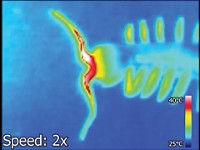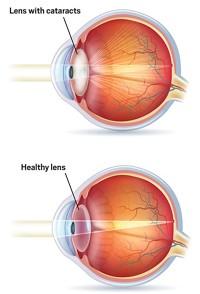Advertisement
Grab your lab coat. Let's get started
Welcome!
Welcome!
Create an account below to get 6 C&EN articles per month, receive newsletters and more - all free.
It seems this is your first time logging in online. Please enter the following information to continue.
As an ACS member you automatically get access to this site. All we need is few more details to create your reading experience.
Not you? Sign in with a different account.
Not you? Sign in with a different account.
ERROR 1
ERROR 1
ERROR 2
ERROR 2
ERROR 2
ERROR 2
ERROR 2
Password and Confirm password must match.
If you have an ACS member number, please enter it here so we can link this account to your membership. (optional)
ERROR 2
ACS values your privacy. By submitting your information, you are gaining access to C&EN and subscribing to our weekly newsletter. We use the information you provide to make your reading experience better, and we will never sell your data to third party members.
Analytical Chemistry
Humans See IR Light When Photons Double Up
Photochemistry: Human infrared vision works because two-photon absorption activates the light-sensitive protein rhodopsin, study suggests
by Celia Henry Arnaud
December 4, 2014
| A version of this story appeared in
Volume 92, Issue 49

Scientists have known since the 1940s that some people can see near-infrared light as if it were visible light. But the mechanism of IR vision has remained uncertain. Now, Krzysztof Palczewski of Case Western Reserve University and an international team report that human IR vision probably works via a mechanism in which two-photon absorption activates the light-sensitive protein rhodopsin within the eye (Proc. Natl. Acad. Sci. USA 2014, DOI: 10.1073/pnas.1410162111).
The team performed color-matching tests on 30 human participants. The subjects perceived wavelengths longer than 950 nm to have a color that matches a wavelength slightly longer than half the original IR—a greenish hue. This phenomenon, the team concluded, could be caused by either of two optical phenomena: second-harmonic generation or two-photon absorption.
To distinguish between the two possibilities, the researchers exposed isolated intact mouse retinas to IR laser light. The retinas responded to the IR wavelengths in a nonlinear fashion, suggesting that second-harmonic generation was probably not at play. The team also observed that the IR light triggered isomerization of the chromophore within crystallized rhodopsin, and they followed up by computationally modeling the process with a two-photon mechanism.
“The evidence from these different experiments suggests that the likelihood of a significant contribution from second harmonics and single-photon absorption is low,” Palczewski says.
Jason B. Shear, an expert on multiphoton excitation at the University of Texas, Austin, says: “Until fairly recently, two-photon excitation was perceived as a phenomenon that would probably have little relevance outside a few specialized applications. Many will find it eye-opening that two-photon excitation can be exploited by humans to perceive their surroundings.”
Such two-photon IR-triggered isomerization could have applications in optogenetics, Palczewski says. In optogenetics, scientists use light-activated proteins, typically engineered bacterial rhodopsins, to study neuronal responses in the brain.
“There’s no reason that bacteriorhodopsin can’t be isomerized by two-photon absorption,” he says. If that’s the case, he adds, the penetration of light into tissue could be much deeper using IR light rather than the visible light typically used in optogenetics.




Join the conversation
Contact the reporter
Submit a Letter to the Editor for publication
Engage with us on Twitter